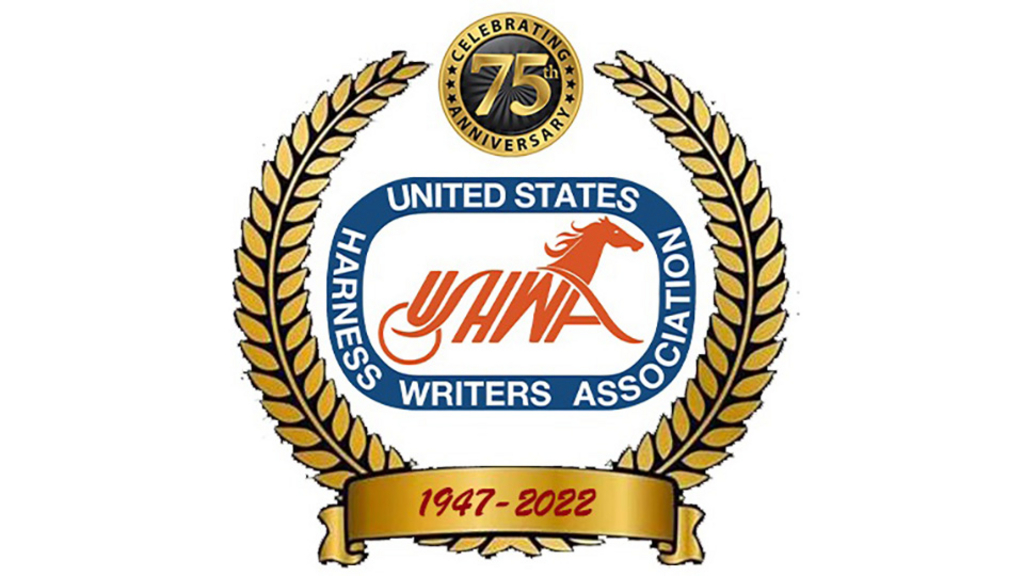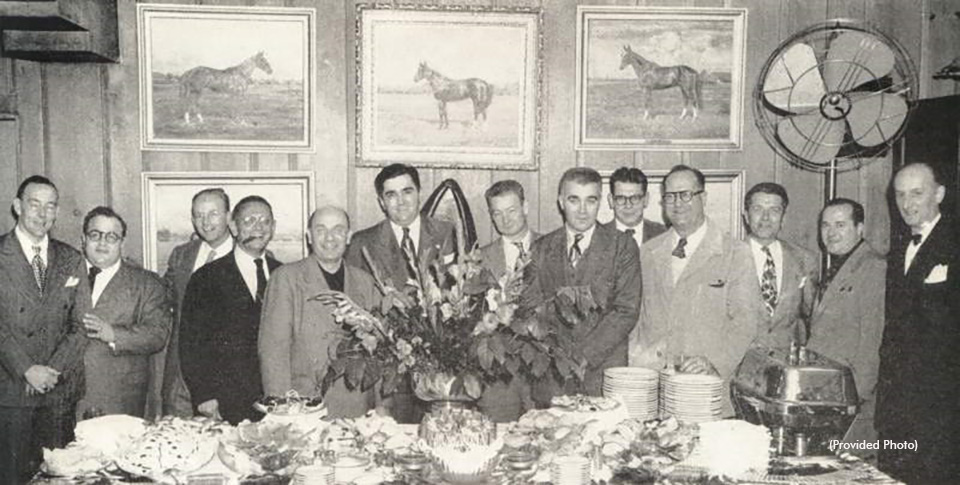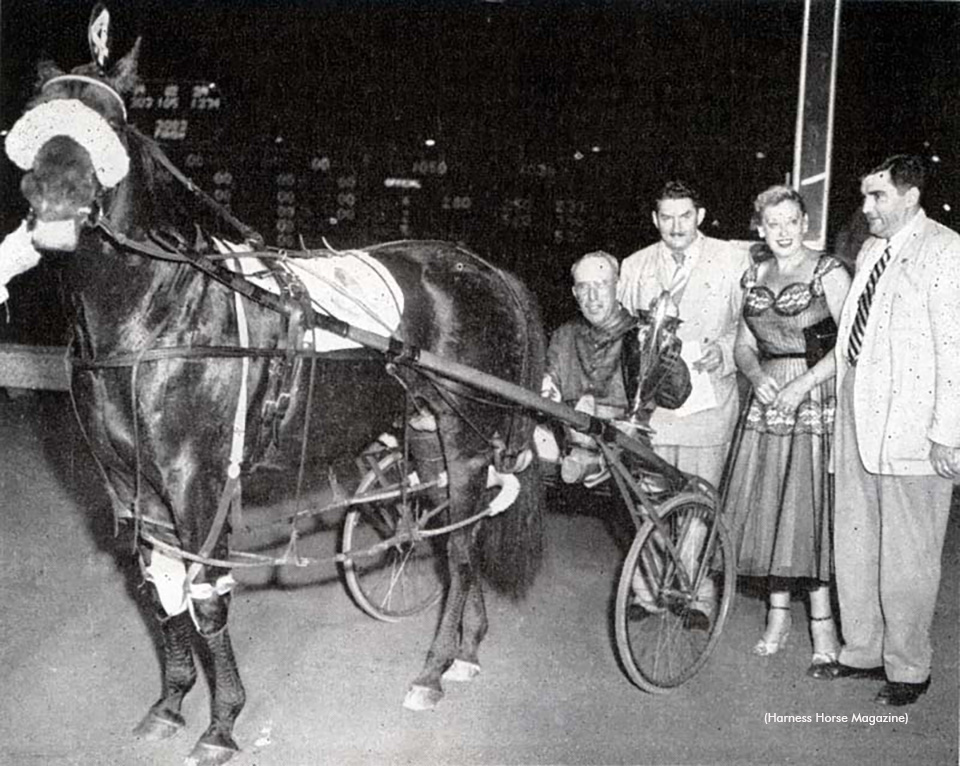A Look Back As USHWA Celebrates 75th Anniversary

Harness racing got its pari-mutuel start in 1940, after years of Grand Circuit racing being contested without betting. Roosevelt Raceway on Long Island was the birthplace of the pari-mutuel tracks, and after World War II, the prospects for the endeavor became quite favourable, and local newspapers began to send “beat” reporters to the track to cover the races. A dozen of these writers, on May 8, 1947, “over hamburgers after the races,” formed the United States Harness Writers Association (USHWA).
Elected president was 36-year-old Mike Lee, sports editor of the Long Island Press, who would serve as president for 13 years – no president since has served for more than three. Five of the founding fathers would eventually become members of the Communicators Hall of Fame – the longest-surviving was Murray Janoff, who passed away in 2015 at age 100.
Originally, the Writers Association contained solely writers – the print media. With the explosion of radio and then television early in the Association’s existence, these groups became part of USHWA; also accepted are photographers, racing publicists and anybody contributing to professional media.
As racing’s popularity spread in the Northeast and Midwest, people outside the New York City scene (Yonkers opened in 1950) became USHWAns, first in an At-Large category. When pockets of communicators developed around racing circuits, USHWA embraced the concept of “chapters” in 1953; today there are 12 Chapters in addition to an At-Large grouping for those not associated with a chapter.
USHWA began selecting the champion horses of the sport, along with people who made select accomplishments during a racing year. The first “banquet” was held in 1948, and the dinners were held in the New York City area, the hub of harness racing, for many years. Philadelphia’s Delaware Valley Chapter was the first to sponsor a national dinner away from Gotham.

Members of USHWA and early supporters of the organization gather for dinner after the Association's October 1948 annual meeting at Roosevelt Raceway. Four of those pictured went on to the Communicators Hall of Fame: Jack Schultz (fifth from left), founding president Mike Lee (to Schultz's left), Ed Binneweg (two to Lee's left), and Bob Zellner (to Binneweg's left).
In the late 1950s, it was decided that the sport needed to honour its “best of the best,” the most influential on the fortunes of the sport, and the idea of a Hall of Fame was born. The trustees and the Harness Racing Museum in Goshen, New York agreed with the writers on the criteria for selection, including the stipulation that elected members had to be living. (There are sections in the Hall for “Immortal” horses and people, and outstanding racers/producers.) Today, the harness racing “family” gathers at Goshen on the first Sunday in July to honour those who are to be inducted into the Hall of Fame.
In 1983, a Communicators Hall of Fame was introduced to commemorate the leading media figures so important to the sport. Each summer, the Hall of Fame and Communicators Hall of Fame ballots, consisting of USHWA chapter nominations “whittled down” by veteran, knowledgeable committees, are sent to eligible voters, with the stricture that a candidate must receive 75 percent of the yes-no votes returned to receive the sport’s ultimate honour.
Harness racing continued to grow and grow in the 1960s and 1970s, and so did the membership of USHWA, which at one time numbered over 400, and who were beneficiaries of a small insurance policy from national USHWA.
During the following period of change in harness racing – contraction, off-track betting becoming more prevalent, simulcasting growing, casino expansion – USHWA had three leaders who served as Officers, lending stability and ability for 30+ years in each case. Bill Brown (Western New York) and Alan Prince (Florida) both served for 49 years on the Board of Directors; Brown was secretary for 36 years, including a two-year term when he acted as both president and secretary, and Prince as treasurer for 42 years. The third towering figure is also an Allen from Florida – Allen Finkelson, who rose through the ranks to become president, then after that term stayed on for 21 years as chairman of the board, alternately insulting and charming people into getting people to help USHWA be a major presence in the sport.

Good Time and Frank Ervin after winning the $10,000 U. S. Harness Writers Pace in July 1952. Presenting the trophy are John Chandler of the Associated Press, Mrs. Mike Lee and Mike Lee, president of the Harness Writers Association.
Women have long been an important part of the publicity and communications of the sport, and they have had the same role within USHWA. There are six female members of the Communicators Hall of Fame, and four women have served as president of USHWA. A couple of years back, USHWA also developed a Youth membership category, allowing aspiring communicators to gain more “inside exposure” to the sport in their formative years.
Over the last few years, USHWA’s executives began asking frequent award winners, whether for their own achievements or those of their horses, how best to present the annual Dan Patch Awards Banquet, and they responded with it to be hosted in a first-class facility in a vacation or resort atmosphere. Thus USHWA has scheduled five of its last six scheduled banquets (one was held in Las Vegas) at the renowned Rosen Shingle Creek Resort in Orlando, Florida, which has received near-universal praise from those participating in the first-class awards dinner.
This focused Banquet format has also allowed a synergy to develop between the association and some of the biggest organizations, horsemen, and racetracks in the sport, allowing a sponsorship relationship to help improve the quality of the Banquets while also helping USHWA’s bottom line, so it can go forward with continued hosting and other major projects such as its relationship with the Hall Of Fame.
(USHWA)

